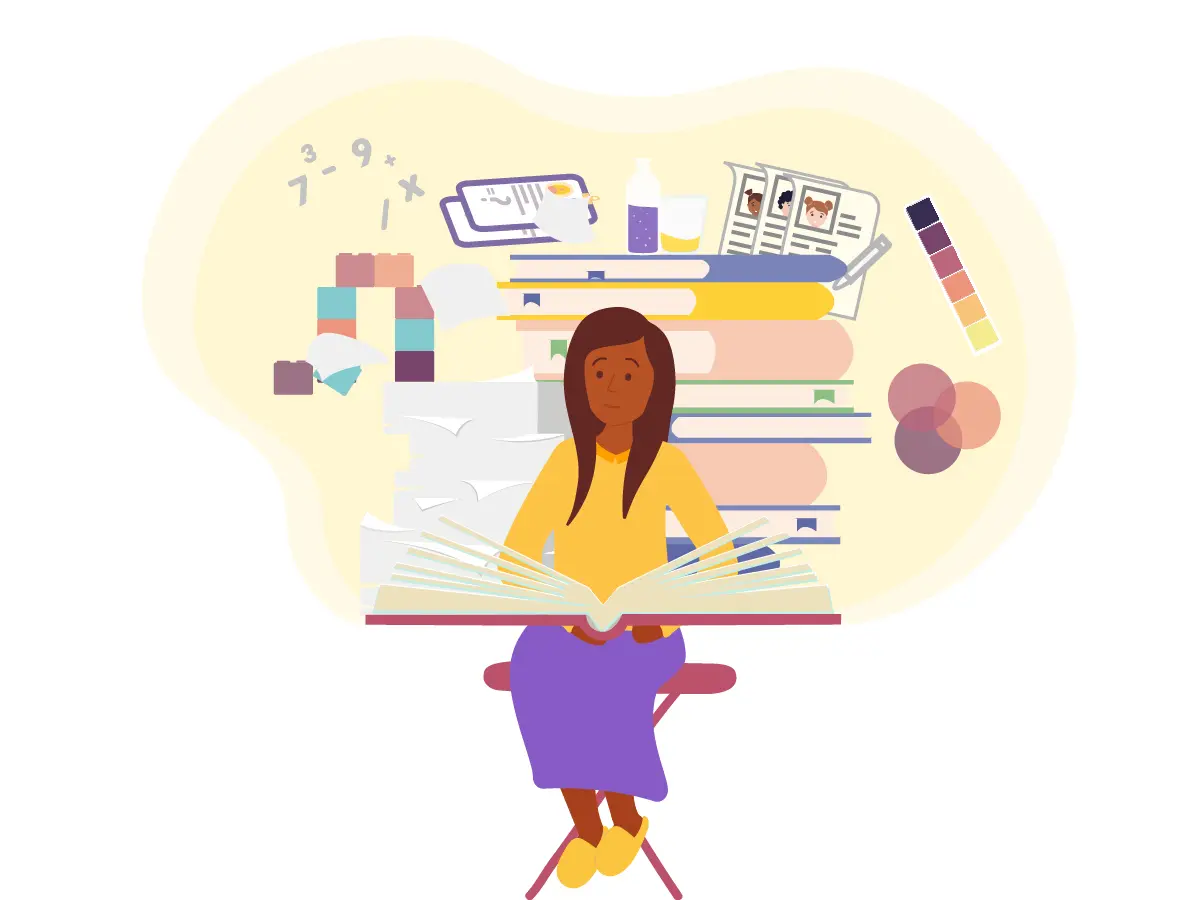settings
children
With Famly since
How can practitioners feel confident about explaining their curriculum to others, while holding true to their values and not creating unnecessary workload?
Sue Cowley offers clarity on how to go about creating a curriculum in the Early Years, with a confidence boosting message for staff.
It can feel daunting, but bringing it back to your ethos and values is what matters most.
First thing’s first - what is a curriculum?
In order to explain your curriculum, first you need to define what curriculum means to you. It’s tempting to think that curriculum is about individual subjects with their accompanying subject knowledge, particularly since Ofsted are doing ‘deep dives’ into subjects and completing reviews of research in different subject areas.
However, while schools offer a subject-based curriculum following the National Curriculum (or similar), this is not the case in the EYFS. Staff must plan for children’s learning, development and care, rather than focusing solely on academic learning. The Statutory Framework states that: “all areas of learning and development are important and interconnected”.
Settings must also consider children’s interests when planning and responding to individual needs. They must take into account that not all children might attend every session – in PVI settings one child might attend half a day a week, while another attends five full days. Settings might not always define a detailed curriculum ahead of time, not least because they don’t teach lessons to a class in the same way as in schools.
-min.jpeg)
Curriculum is everywhere
Everything you do in an early years setting is part of your ‘curriculum’: children’s physical and emotional development is as important as their academic learning. Children are learning throughout the day, with the prime areas threaded through every aspect of provision. Children are never not learning to communicate, developing physically or becoming more socially confident while they are with you.
The focus from DfE and Ofsted in recent years has been on subject knowledge. However, in the Early Years, it could be argued that the ‘subject’ is the unique child. If we are confident about the child centred approach taken in early years this will shine through in the way we explain our curriculum to others.
So let’s look at where to start when we talk about curriculum.
Start with your values
Instead of pondering ‘what Ofsted wants’, a great way to start thinking about curriculum is to consider your provision and what it offers to those who use it. Ask the question: what makes us ‘us’? If you could choose three things to define your setting, what would they be?
For instance, in our preschool this would be our Forest Club, the use of nursery rhymes throughout the day, and the way we weave Makaton into all aspects of provision. You can then move on from this to consider the intent, implementation and impact of each of your values.
How do we do this? Our intent with Forest Club is to give children active outdoor play, developing knowledge about nature, and building strength, resilience and self-regulation. Implementation is about the training staff have done, along with resources purchased and the outdoor environment created. Impact is shown through children’s developing ability to manage risk, their increasing independence, their knowledge about the natural world and also the popularity of forest club with our families.
Analyse your provision
Another useful way to define your ‘curriculum’ is to think your way through a day/week in your setting. What do you do at each point in your daily/weekly routine and why do you do it? What skills, knowledge, attitudes and attributes do the children develop as a result of the things you choose to do with them?
For instance, snack time is a crucial time for learning in settings. Children learn how to handle tools and think about mathematical concepts such as part/whole as they prepare snacks; children build knowledge about foods from around the world; they also develop their social and emotional skills as they serve and share food with their peers.

Thinking resources
The heart of every early years setting is its resources – practitioners make choices about which resources to buy and use, based on what children learn from playing with them. In many ways, a list of regularly used resources will define the learning children do while they are with you.
It’s useful to regularly edit resources, particularly in packaway settings where every square inch of storage space has to count. Combine an audit of your resources with discussions about why you use each one and the knowledge or skills it helps children develop.
As you perform the audit, consider how equitable and representative your resources are, and the subtext sent to children. For instance, do you have storybooks where children can see all kinds of people, places, communities and families valued, including ones similar to their own?
Why stories are key
The key to early child development is to get foundational concepts in place. Writing as a way to convey meaning, and historical concepts such as past, present and future. How to be a good friend, volume and capacity, numbers as a representation of quantity, where we are in the world and so on.
As children develop their vocabulary, listen to stories and engage in serve and return conversations with adults, they gradually build their understanding. Although the concepts above sound simple, they take a great deal of repetition to develop.
Stories, songs and nursery rhymes are a great way to help children understand them, because they offer an imaginative context for thinking. Consider the stories and texts you use and how these reinforce conceptual learning. For instance, the nursery rhyme Ten Green Bottles supports learning about the order of numbers but also the basics of gravity, as the bottles fall from the wall.

Linking to the National Curriculum
Anecdotally, one of the biggest difficulties for school-based settings has been the idea that Reception teachers should ‘map’ their provision onto subject-based work in key stages one and two. As Ofsted themselves have noted, this is tricky to do, because the areas of learning do not match the National Curriculum subjects.
Consider the prime area of physical development: some might suggest that you map PD onto the PE curriculum in schools. However, this would be a misunderstanding of the EYFS and of PD: physical development is embedded throughout the setting day, rather than being like a ‘PE lesson’ in school.
Early years is the phase on which everything else builds. The foundational concepts you teach, and the work you do on development and care, supports children’s later learning as it becomes more subject specific. Encourage colleagues in other phases to consider how they build on the learning done in early years, as well as asking you to link to the work done later on.
For instance, how do they build on the fantastic work done in many settings to ensure that children develop self-regulation and become independent learners? In this way, we can all learn from each other and better support our unique children, rather than expecting one size of curriculum to fit all.
Sue Cowley is an author, presenter and trainer, and she's helped to run her local early years setting for the last decade. She's also hosting a webinar on ‘Creating a Curriculum in the Early Years’ on 24th August.
The big ideas
Get 1000s of free EY activities
Want over 7,000 activities? See them in a free 14-day trial. Filter to target learning areas, age groups and topics, and get inspired.
Get started









